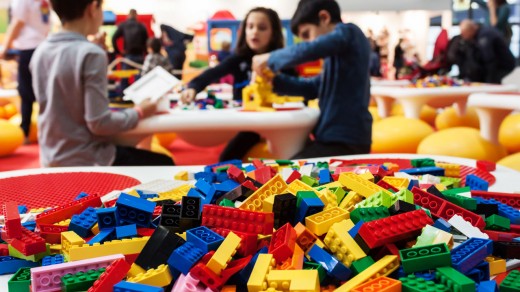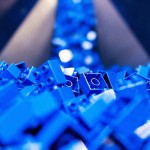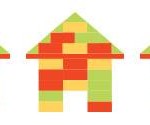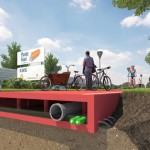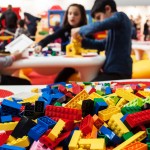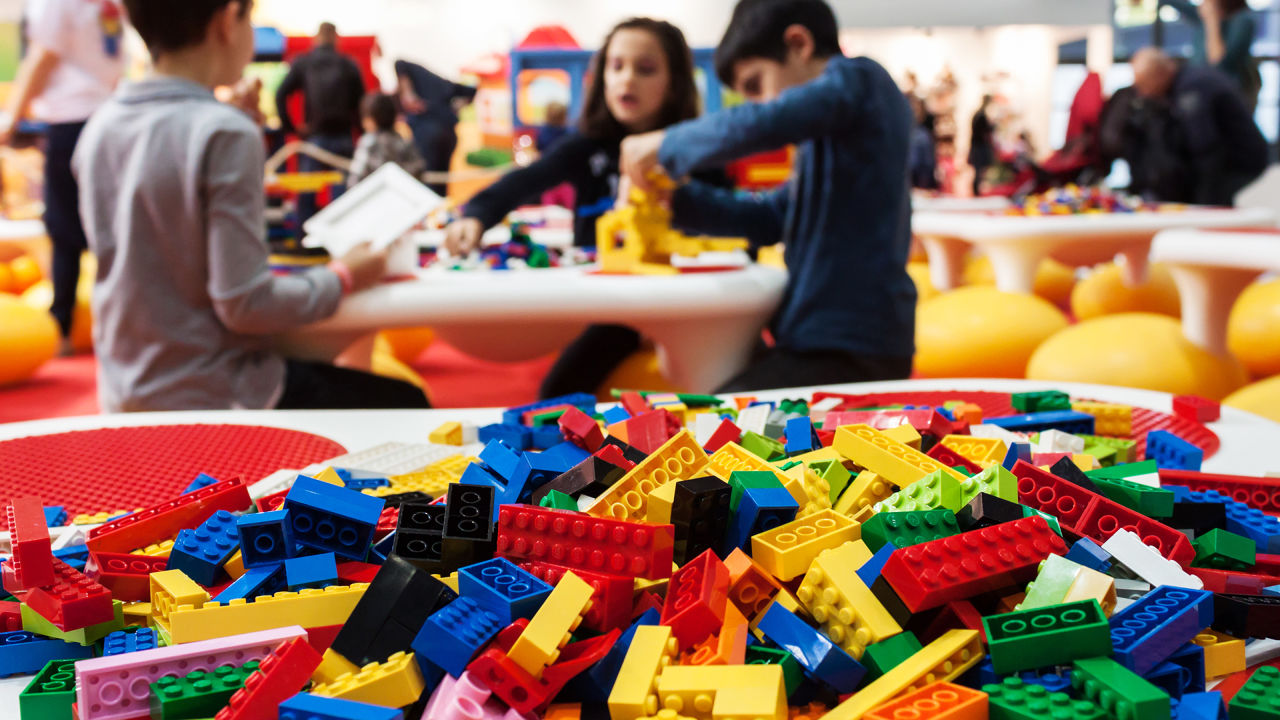Lego Crosses The Digital Divide
Having discovered from its personal mistakes, Lego is embracing expertise on its own phrases, hanging youngsters—and the fun of creating—first.
February 27, 2015
With licensing agreements with Hollywood’s greatest franchises, a wildly a success movie series of its personal, and authentic product traces that have spawned television and web tie-ins, Lego is experiencing a boom that makes its brush with chapter over a decade ago seem like an alternate fact. Plus, it still lacks any real competition in the interlocking-constructing-toy container. the corporate does what it does, and it does it actually smartly. That’s why, not like the rest of the toy industry—or the sector, for that subject—Lego isn’t tripping over itself trying to combine accelerometers or Bluetooth or web of things functionality into all of its product strains to get youngsters’ consideration.
there may be quite a few that on the 2015 the big apple Toy fair. Sheltered from the February rain in the atrial Javits center, toy exhibitors show their latest creations—perennially a hit dolls and vehicles infused with smartphone cameras and voice reputation chips—as patrons prowl the floor in search of the next hit to position on their shelves. Even Barbie is talking to us.
“you place the toy trade under one roof and also you hear, ‘this is what youngsters want,’” says senior director of brand name family members for Lego Michael McNally, regarding the tech-saturated toys. “Lego very resolutely stands in opposition to that.”
the corporate has been cautious about jumping on the tech bandwagon ever given that focusing too much vitality on non-toy gambles within the late ’90s—the Lego video games and theme parks—that virtually undid the corporate. Lego executives vowed from then on to place youngsters first: Any new options must only add to the enjoyable.
however the company hasn’t became its back on digital. a long way from it. As quick company just lately pronounced, Lego has an entire division, known as the future Lab, accountable for charting the corporate’s tech-related future; remaining summer it quietly take a look at-launched in North the usa the Fusion line of hybrid bodily and in-app Lego building, which has been an educational success for the corporate. Its techier, programmable Mindstorms line continues to thrive. the new app-suitable extremely dealers line was simply launched as a that you can imagine pilot for different units to emulate. unlike other brands on the Toy fair floor, Lego would not see know-how as a looming wave to experience in any respect prices: As this era of youngsters loses the distinction between physical and digital play, Lego has discovered that preserving the spirit of establishing will keep their toys in kids’ palms.
A history Of Tech Tinkering
Lego featured electrical motors in sure units of its Technic line within the Nineteen Seventies, however the company’s experiments fusing their bricks with digital tech began with the 1989 release of the 4.5V Technic control center and the far more broadly released 1990 9V Technic keep an eye on center, which featured a keep watch over panel which may be programmed with extraordinarily common commands to regulate three motors. Smaller regional releases, quirky, proto-programmable Lego units just like the training-targeted Dacta keep an eye on Lab and Cybermaster, followed within the ’90s.
It used to be the 1998 free up of the primary Lego Mindstorms set that gave the company its first digital tech mass-market success. It was once built across the RCX, a hefty palm-sized regulate unit with buttons, an liquid crystal display display, and a whopping 32K of RAM to store the software’s firmware and consumer-created applications. users plugged the RCX into their laptop, wrote applications, and constructed robots brick with the aid of brick across the RCX control unit. Three Mindstorms iterations followed, with NXT in 2006, NXT 2.zero in 2009, and the current EV3 adaptation launched in late 2013; the RCX, which was once originally paired with only mild and touch sensors, regularly accommodated sound, ultrasonic, and shade sensors along with a cavalcade of others in the stores by means of exterior firm HiTechnic.
the most recent technology, Mindstorms EV3, connects to cell devices via Wi-Fi and Bluetooth and is controllable by means of a cell app, which Microsoft verified by using zipping a Mindstorms-constructed bot around by way of floor pill while promoting a July 2013 Microsoft-Lego instructional partnership.
Mindstorms is geared toward children 10 and older. For digitally minded youthful ones, there are video video games. Lego’s 1990’s foray into the sector may have been a dangerous diversion for the company, but it surely helped lay the inspiration for its multimedia future.
The Gaming Connection
imagine a time before photorealistic shooter death suits and hugely multiplayer on-line video games—a time before the internet as we comprehend it. imagine a global the place games had just surpassed aspect-scrolling Mario. Now think about the first Lego experience to hit video games, a free-roaming three-D wonderland that squeezed all the creativeness of unending building prospects to let players…deliver pizza.
It was once magical.
Lego Island, launched in 1997, was once an iconic title that codified the whimsy and humor that may follow in much of Lego’s multimedia. The video games that followed were infrequently disasters, however they diverted time and money from different tasks. Licensing and partnering with external sport studios for building proved to be a far more efficient—and a hit—option. the company’s first licensed sport used to be Lego Creator: Harry Potter in 2001—a unlock that opened the floodgates for a bunch of licensed journey video games reinterpreting prominent residences like star Wars, Batman, Lord of the Rings, and marvel super heroes with signature Lego goofy allure. They were hits. The 4 Lego big name Wars video games alone sold over 15 million copies.
however delving into video games was once a daunting determination for a toy company that had yet to take its model any place digital. Naturally, Lego leadership was terrified that youngsters would transition into video games and leave the plastic toys some distance in the back of.
“We have been a little bit bit afraid that, with a $40-$50 recreation, that money would come straight out of our toy earnings—however the opposite came about,” says Søren Torp Laursen, president of Lego North the united states.
Plus, game reviewers have celebrated how licensed video games are an extension of the Lego constructing expertise. Defeated enemies ruin into items, and lots of video games characteristic some type of crafting mechanic to let gamers build something inside the licensed universe. briefly, there’s a tangibility to this digital realm.
Which was once some other revelation to Laursen and his fellow executives: building in-sport tickled the identical urge to construct in person, and doing one often ended in doing the opposite.
“kids see no difference between the digital and bodily world,” says McNally. “it usually is content on YouTube that conjures up them to return and play. Our intention is to encompass kids with experiences that force them back to building.”
discovering Fusion
The permeable barrier youngsters see between bodily and digital led Lego to release Fusion ultimate July, a playset-and-app combo that harnessed a pill’s digital camera to scan Lego structures in the real world and transfer them into the game.
Fusion was once named E-connected Toy of the year via the Toy trade association, but it’s had bumpy start. Like the remainder of the sector, Lego had to learn the arduous manner that it’s by no means as simple as making an app and calling it a day. Lego playsets best need to be compatible with palms, however Lego apps had to be appropriate with quite a lot of older cell operating methods.
“We had been embarrassed as a result of individuals would purchase the app and couldn’t use it. We take full accountability for that,” says Laursen. the corporate has worked with the accomplice studio that made the Fusion app to repair the difficulty, but Laursen’s just thankful that they failed to release Fusion to the sector abruptly in a wide unlock.
With Fusion, users can’t scan in simply any building: as a result of the boundaries of pill cameras, buildings can simplest be built one brick deep, like a stage set piece. It took youngsters some time to adapt to constructing this fashion, but once the constructing is scanned in, children can have interaction with it extra totally in-game. in the future, Laursen says, cell camera and software tech will trap as much as Lego’s ambitions and be capable of scan any structure constructed out of Legos.
This 12 months, Lego is releasing some other experimental set with a digital aspect that’s much less bold—but completely within Lego’s digital play mission. It’s a superspy-themed line, referred to as ultra sellers, with units constructed just like every other—but every set contains different 1×1 blocks that may snap together with every other Lego block. These 1×1 blocks have interaction with touchscreens. When kids download the extremely agents cell tablet app, they’re brought about to build “instruments” out of the unique blocks that have interaction with the tablet—letting them play on the pill via blocks.
growing a distinct block to have interaction with a smartphone app isn’t as technically modern as Mindstorms was once, but that’s never been the point: ultra dealers is ready conserving the Lego building spirit alive. inside of Lego’s walled-off section on the brand new York Toy honest ground, the ultra retailers sets—featuring vehicles and spies and villains—are perched on wall cabinets. They appear to be some other of Lego’s sets, which is roughly the purpose. They too may someday get the interactive app therapy. It is dependent how the youngsters react, says Laursen.
Lego’s brilliant yellow Toy truthful fortress sits just a few hundred toes from the northern fringe of the fair’s primary floor, where many of the tech-forward firms are gathered in Tech Toys alley. There, smartphone app-managed drones equipped with cameras flit between cubicles. Lego is aware of, and even hopes, that these gadgets keep youngsters pushing the traditional toy firm toward the longer term. It’s doing all it might probably to be ready—however to fulfill the long run the Lego method.
“If there’s a problem, it’s with the percent of trade,” says Laursen. “we are an organization that likes to excellent things. We’re trying to study a special manner of what perfection approach.” Working in the digital house, he says is “a way more dynamic experience.”
[Lego: Stefano Tinti by way of Shutterstock]
quick company , read Full Story
(117)

